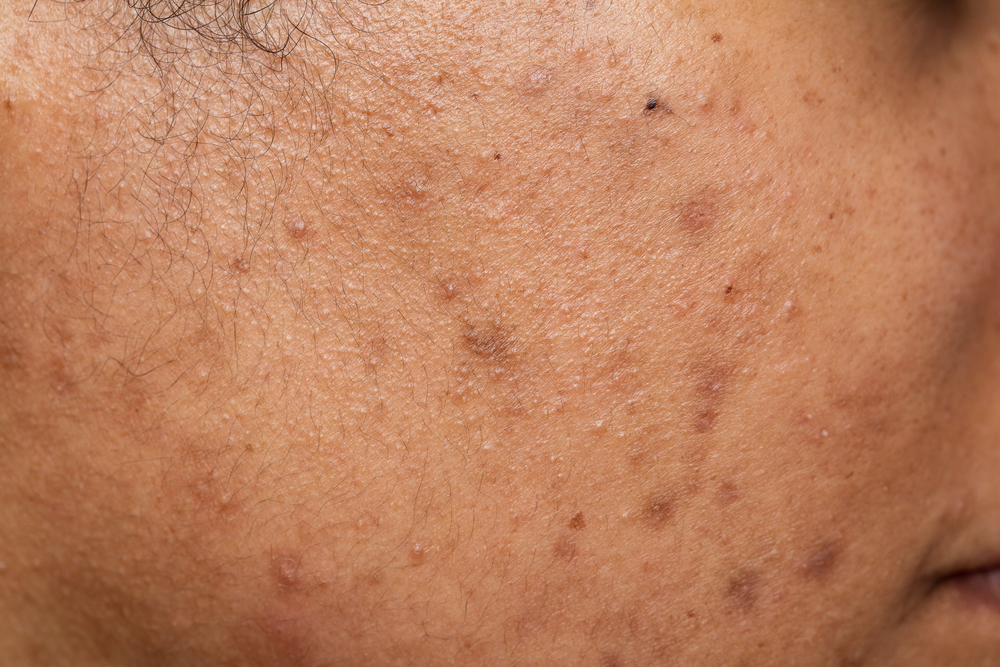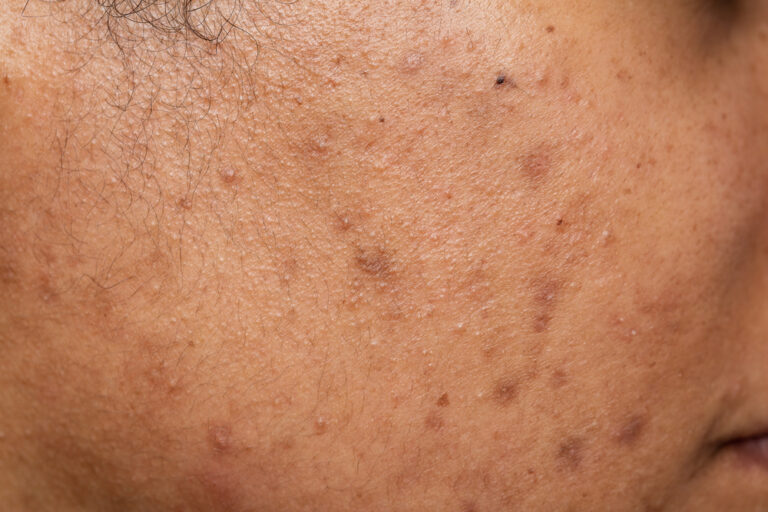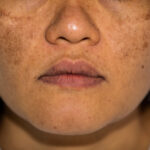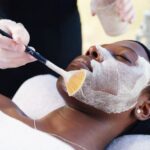Darker skin types (from Fitzpatrick skin type IV to VI) are prone to tanning and pigmentation. We know that they don’t burn as easily.
This tanning is a protective mechanism. It is the pigment cells producing more melanin in order to protect the DNA of the cells from mutations. This is exactly the reason why skin cancers such as melanoma are less common in darker skin types. However, this predisposes people of rich complexion towards even more pigment-related skin concerns.
UVA rays penetrate deeper into the skin and cause the degradation of collagen while UVB rays act more superficially on the epidermis, causing changes in skin texture as well as color.
Photodamage in rich complexions:
- While photodamage in lighter individuals shows up as wrinkles and redness, in darker individuals it shows up as persistent pigmentation and overall uneven skin tone.
- It can also lead to sunspots called lentigines. These look like blotches of pigmented skin.
- Additionally, freckles also tend to develop with continued exposure (they are not merely restricted to lighter skin types). These occur because the skin is unable to evenly produce pigment, giving it an overall patchy appearance.
- Any existing post-inflammatory hyperpigmentation tends to worsen with sun exposure, adding to pigmentary woes.
- Another important condition that comes up with chronic sun exposure is melasma.
- Dermatosis papulosa nigra (DPN) is another very characteristic telltale sign of sun damage in dark-skinned individuals.
- Wrinkles tend to show up later in these groups as compared to lighter skin types.

Prevention:
Prevention of sun-induced damage is important in darker skin tones because even though melanoma and other cancers like squamous cell carcinoma and basal cell carcinoma are relatively rare, they still remain a grave concern after long-term continued exposure.
Once pigmentation develops, it tends to be more stubborn in dark-skinned individuals. Moreover, treatments such as lasers and chemical peels are associated with a higher risk of post-inflammatory pigmentation in such cases.
Hence, strategies needed to prevent photodamage at an early stage need to be adopted.
For example, incorporating strict use of sunscreen into the daily routine will prevent years of cumulative sun-induced damage.
Sunscreen use:
- There has been a lot of debate whether sunscreens are actually necessary in darker phototypes.
- However, we know that UV-induced damage is significant even in Fitzpatrick skin types IV to VI. Hence, strict sun protection is essential.
- Chemical sunscreens may be a better option than physical sunscreens as the latter tend to leave a white cast on the skin, which is more pronounced against dark skin tones.
Treatment:
Traditional anti-aging options such as retinoids work well for treating photodamaged skin since they act at the cellular level. They will even out the skin tone as well as make lentigines and freckles look less pronounced.
Many treatments like lasers, light therapy, dermabrasion, and chemical peeling can be used for treating photodamage. However, there is a higher risk of post-inflammatory hyperpigmentation. Immediate post-procedure care in the form of sun avoidance and sun protection is vital in order to prevent any untoward side effects.
References:
- Sachdeva S. Fitzpatrick skin typing: applications in dermatology. Indian J Dermatol Venereol Leprol. 2009;75(1):93-96. doi:10.4103/0378-6323.45238
- Rossi A, Alexis AF. Cosmetic procedures in skin of color. G Ital Dermatol Venereol. 2011;146(4):265-272.



